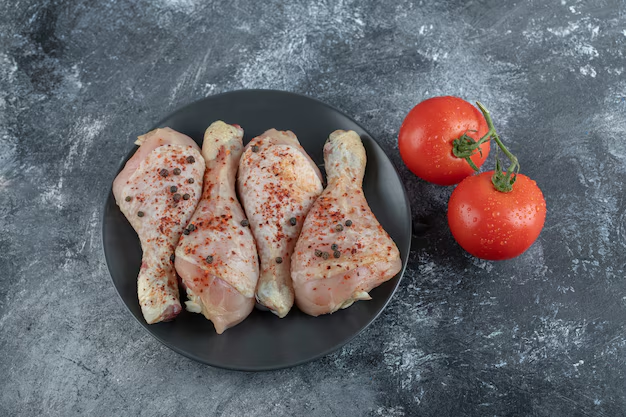How Long Will Your Fried Chicken Last in the Fridge, Really?
Fried chicken, with its crispy exterior and tender, juicy meat, is a beloved comfort food around the world. But as delicious as it is, after your meal's over, you've likely found yourself wondering, "How long can I keep this leftover fried chicken in the refrigerator?" Whether you're meal prepping, planning leftovers, or just can't finish what you have in one sitting, it's essential to understand the safe shelf life of fried chicken to avoid foodborne illnesses.
🧐 Understanding Fried Chicken Shelf Life
The shelf life of fried chicken can vary based on several factors like preparation methods, refrigeration conditions, and packaging. Generally, fried chicken can safely be stored in the refrigerator for up to 3 to 4 days. This duration is widely recognized in food safety guidelines as the optimal period to maintain the quality and safety of cooked poultry.
Key Factors Affecting Shelf Life:
- Preparation: Proper cooking kills bacteria, but improper handling post-cooking can lead to contamination.
- Refrigeration: Adequate temperature (below 40°F or 4°C) is crucial to inhibit bacterial growth.
- Storage: Airtight containers or heavy-duty aluminum foil/plastic wrap is recommended.
🕒 Tips for Storing Fried Chicken
1. Cool It Down Quickly
To maximize the shelf life, allow the fried chicken to cool to room temperature before refrigerating, but ensure this process doesn't exceed two hours. Cooling it quickly reduces the time it spends in the "danger zone" (40°F to 140°F), where bacteria multiply rapidly.
2. Use Proper Containers
Opt for airtight containers to keep moisture out and prevent the chicken from absorbing other odors from the fridge. Heavy-duty zip-lock bags can also work if you're space-conscious.
3. Label It
It's all too easy to forget when exactly you put that leftover chicken in the fridge. Labeling the date can help keep track and ensure it doesn't sit forgotten.
📋 Quick Storage Tips Summary:
- 🕒 Cool Before Storing: Let chicken cool naturally within 2 hours.
- 🧊 Use Tight Seals: Opt for airtight containers to maintain freshness.
- 🗓️ Label Dates: Keep track of when it was stored for safety.
❓ Why Is It Important to Follow These Guidelines?
Abiding by these storage guidelines helps mitigate the risk of foodborne illnesses. Consuming cooked poultry that hasn't been stored correctly can lead to unpleasant food poisoning symptoms due to bacteria like Salmonella and Campylobacter.
Symptoms to Watch For:
- Nausea
- Vomiting
- Diarrhea
- Stomach cramps
By practicing proper food storage, you're not only preserving the quality of your fried chicken but also safeguarding your health.
🤔 Can You Freeze Fried Chicken?
Absolutely! Freezing can extend the shelf life of fried chicken to around 4 months, although for best quality, it's advised to consume it sooner. Keep in mind, frequent freezing and thawing can degrade the taste and texture. If you plan on freezing your fried chicken, here's what you should do:
Freezing Steps:
- Wrap Individual Pieces: Use heavy-duty foil or freezer bags to minimize freezer burn.
- Remove Air: Squeeze out as much air as possible from bags before sealing.
- Label: Again, labeling with the date ensures you keep track over longer periods.
Pro Tip: When you're ready to enjoy your frozen fried chicken, thaw it safely in the refrigerator overnight, rather than on the counter, to keep it within a safe temperature range.
🍗 Reheating Fried Chicken: What Works Best?
Reheating fried chicken can be a bit of a challenge if you want to keep the crispy exterior without drying out the meat. To achieve that freshly-cooked taste, consider these methods:
1. Oven Reheating
The best method to maintain that signature crunch is reheating in an oven. Preheat your oven to 375°F (190°C) and place the chicken on a baking sheet. Reheat for about 10-15 minutes or until the internal temperature reaches at least 165°F (74°C).
2. Air Fryer
An air fryer is a fast way to restore crispness while retaining moisture. Set the air fryer to 375°F (190°C) and heat for 4-5 minutes.
3. Avoid the Microwave
While convenient, microwaving fried chicken often results in a soggy crust. If you must use a microwave, try microwaving just until warm and then finish in the oven or air fryer to regain crispiness.
💡 Avoid These Reheating Mistakes:
- 🚫 No Microwaving: Steer clear unless you're in a real pinch.
- 🍳 Crisp It Up: Opt for ovens or air fryers for the best texture.
🚫 Mistakes to Avoid When Storing and Reheating
- Overcrowding the Fridge: This can lead to uneven cooling.
- Forgetting to Cool: Always let it cool before storage.
- Ignoring Signs of Spoilage: Bad odor or a slimy texture are red flags.
🌟 Practical Consumer Tips
Here’s a handy list to ensure safe storage and handling of your leftover fried chicken:
- Storage Duration: 3-4 days in the fridge; up to 4 months in the freezer.
- Safe Temperature: Keep refrigerated pieces below 40°F (4°C).
- Reheat Thoroughly: Always reheat to an internal temperature of 165°F (74°C).
Conclusion
Storing and reheating fried chicken properly requires understanding a few key steps, but the payoff is well worth it. Not only does following these guidelines help preserve the delicious taste and texture of your leftovers, but more importantly, it ensures you're consuming food safely. By cooling, storing, and reheating thoughtfully, you not only maximize the longevity of your fried chicken but also continue to relish every bite of its delightful flavor and crunch. Remember these tips the next time you have leftover fried chicken, and enjoy it just as much the second time around!
